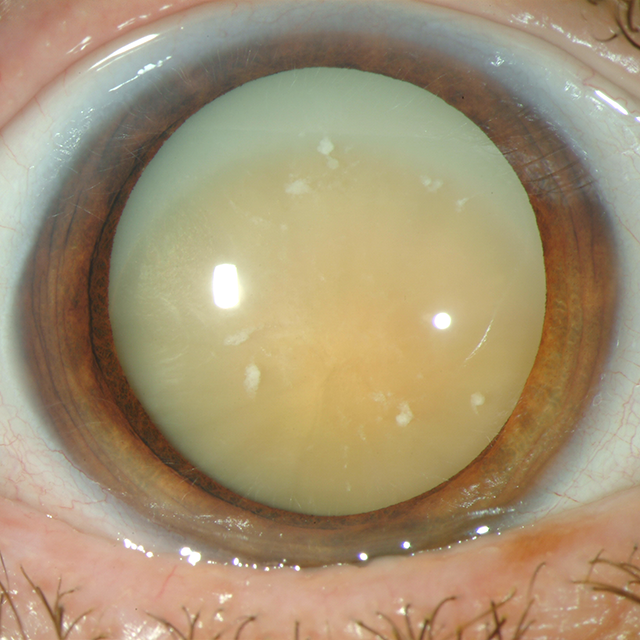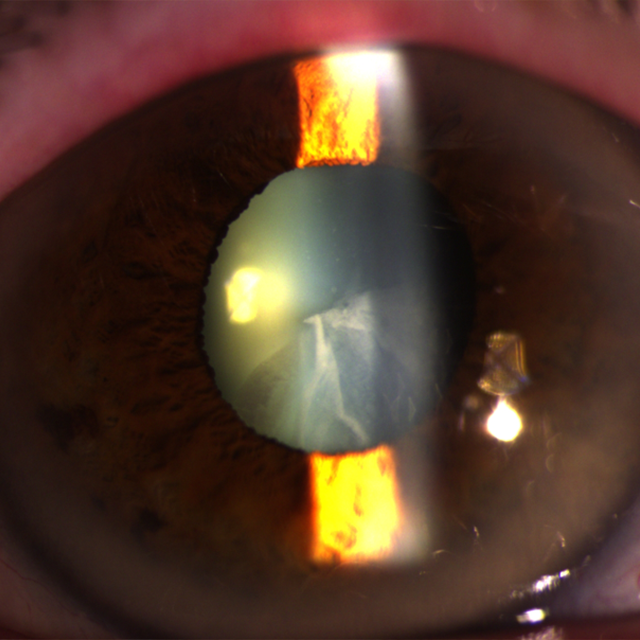Patient Education
Cataract



Cataract
A cataract is a lens opacity (cloudy lens) which is usually categorized by its cause or location. The most common cataracts are age-related, but there are also diabetic cataracts, traumatic cataracts, drug-induced cataracts, congenital cataracts, and cataracts caused by other medical conditions, including severe allergic reactions.
- Age-Related Cataract
- Drug-Induced Cataract
- Congenital Cataract
- Other Acquired Cataracts
Age-related cataracts are sub-classified into 3 groups (based on location):
- Subcapsular Cataract
Opacity lies directly under the anterior or posterior lens capsule (called anterior and posterior subcapsular cataract, respectively). Due to the location of the posterior subcapsular cataract, the opacity has a more profound effect on vision than the other age-related cataracts, and can disrupt tasks such as reading or any close-up work, and mainly affects tasks under bright light conditions.
- Cortical Cataract
Asymmetrically located, radial, spoke-like opacities or vacuoles extending from the periphery of the lens toward the lens poles. This is usually caused by swelling and liquefaction of the outermost cortical fiber cells of the lens.
- Nuclear Sclerotic Cataract
This cataract is characterized in its early stages by a yellowish hue due to the deposition of urochrome pigment. When advanced the nucleus appears brown (a brunescent cataract). Because of the change in the refractive index of the lens nucleus, some elderly patients may consequently be able to read again without spectacles ('second sight of the aged')
Many medications can cause cataracts to develop, which is why it is very important to take a detailed medical history (including a list of all medications taken) at every eye examination. For example, steroid use can cause anteroir and posterior subcapsular cataracts. Gold, which is used in the treatment of rheumatoid arthritis, and busulphan, used in myeloid leukemia, may occassionally cause lens opacities as well. Drugs such as chlorpromazine, amiodarone, and allopurinol can also cause the deposition of granules or opacities on the lens.
Congenital cataracts occur in about 3:10,000 live births. The most common cause is genetic mutation, but other causes may include chromosomal abnormalities such as Down syndrome, metabolic disorders such as galactosemia, and intrauterine insults such as birth trauma or rubella infection.
Certain medical conditions may result in cataract development such as diabetes, hypocalcemia, Fabry's disease, Wilson's disease, atopic dermatitis, and myotonic dystrophy. As well, toxicity from various agents including ionizing radiation, chemicals, and electricity, has been shown to produce cataracts. Even blunt or penetrating trauma to the eye can cause a cataract.